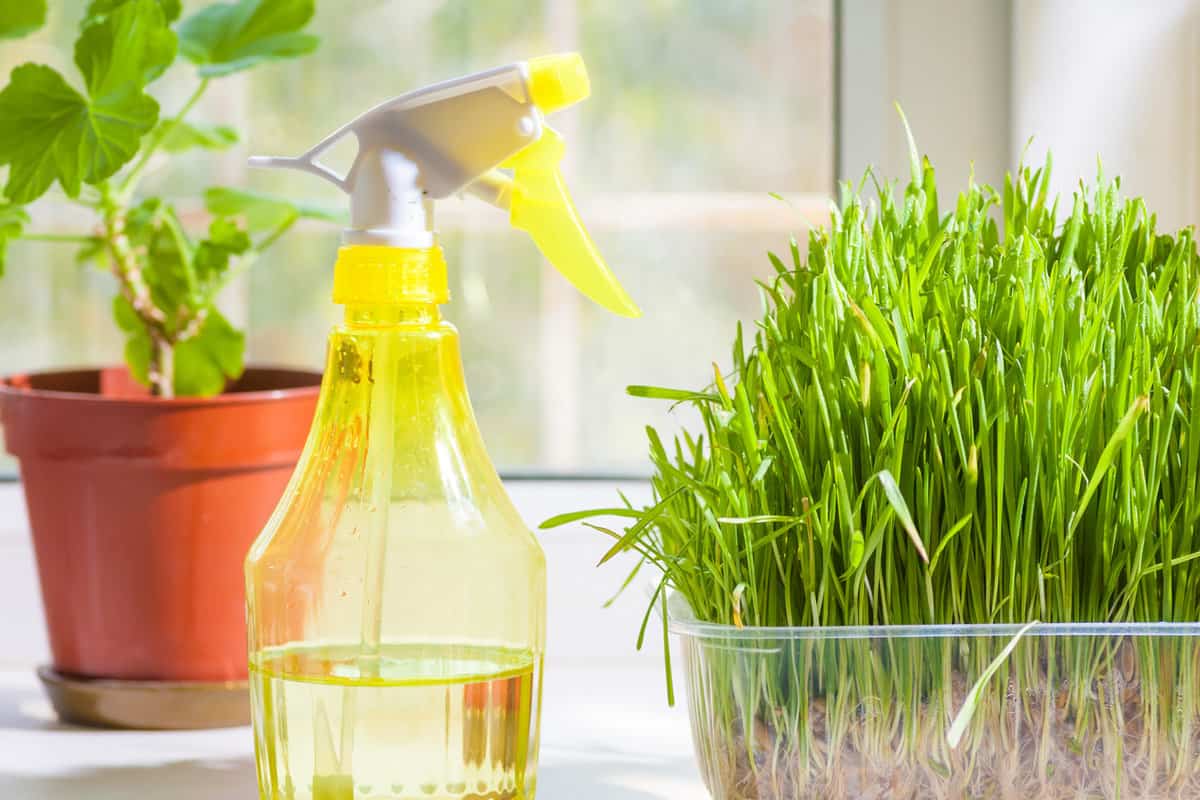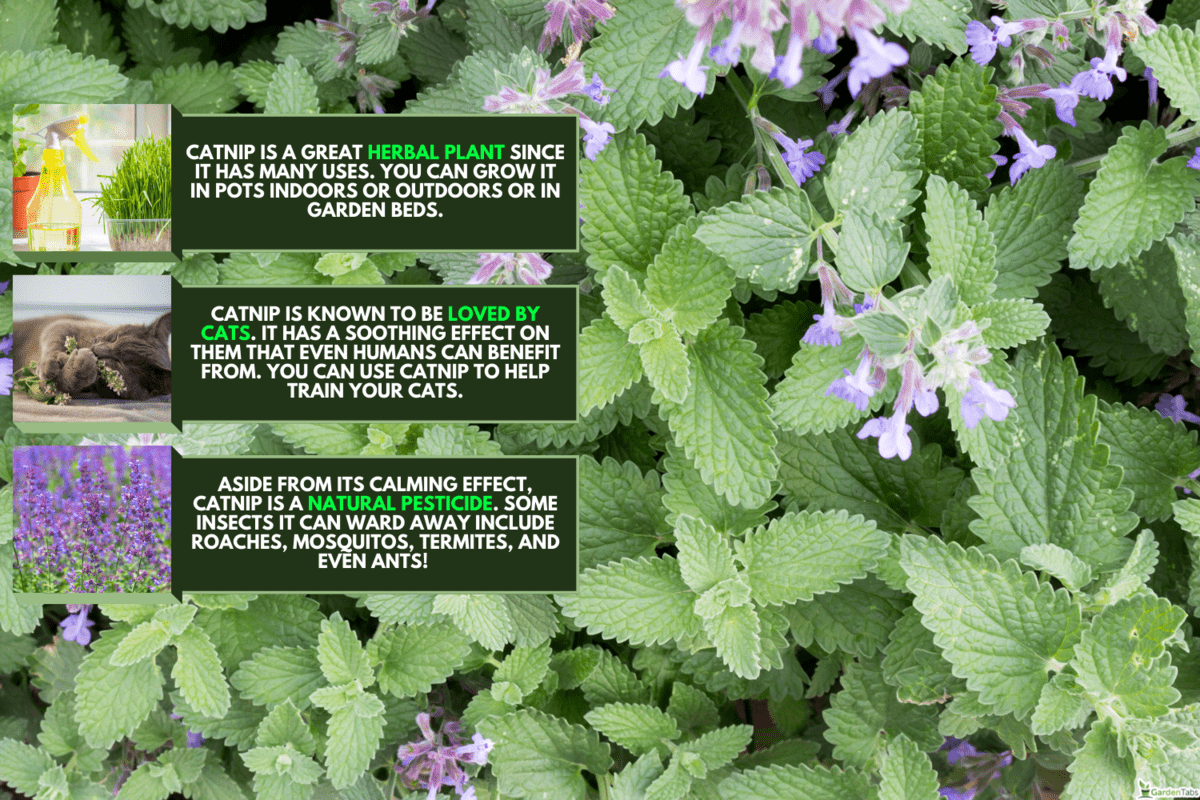Catnip is known for being well-loved by cats, though humans can benefit from it as well. It is always a good sign when your catnip is flowering, but what should you do when it doesn't? We have researched why your catnip might not be flowering and what you can do about it. Keep on reading!
Your catnip may not be flowering because it is too young or does not have enough nutrition. Newly grown catnip may not bloom until after the first year.
More mature catnip plants might not bloom due to unsuitable growth conditions. You can promote growth by improving the plant's environment.
We will go into more detail on why your catnip may not be flowering in the next sections. We will also give you tips on how to get your catnip to flower, as well as some additional information. To learn more about catnip and how to care for it, read on!
Why Won't My Catnip Flower?

At the very least, your catnip is not flowering because it is not ready. Consider when you first planted your catnip. If it is still quite young, at least a year old, then it could still be maturing. You can expect it to flower in the next blooming season.
Your catnip will only flower in the blooming season. This is usually between late spring to fall. Don't worry if your catnip is still not blooming into the spring since the flowers may come much later.
If your catnip is not blooming, monitor the growth of the plant. It should be at least two feet, which is the base height of mature catnip.
Check to see if the leaves are green, healthy, and growing in small clusters. Taller stems eventually grow flowers on the end.
Catnip plants smaller than two feet are unlikely to grow flowers anytime soon. This could be the case if the conditions are not right for the plant. The conditions could be the underlying reason why your catnip is not growing.
Mature Catnip Not Flowering
Like any other plant, catnip needs adequate nutrition. This comes from the type and health of the soil, the amount of sunlight, water, and care that the catnip receives. Whether or not the catnip grows flowers will depend on one or more of these factors.
For example, although catnip may grow in poor soil, it might not receive adequate nutrition to promote flower growth. Your catnip could end up being just under the 24-inch height range.
A couple of other factors that impact growth are inadequate plant food and lack of sunlight. Knowing this, you can figure out ways to promote flower growth in your catnip. We will discuss these in the next sections.
How Do You Get Catnip To Flower?

The best way to ensure that your catnip will flower is to plant it right the first time.
You can either repot it from the store or grow it from a seed. Growing catnip from the seed means that it will take longer to develop flowers. However, either of these methods is still quite an undertaking.
Click here to see these catnip seeds on Amazon.
If you choose to plant catnip in a pot, get one with good drainage at least eight inches in diameter and eight inches deep. Some experts recommend a pot that's at least 12 inches in diameter and 10 to 12 inches deep.
The size you choose depends on the size of the plant you want to end up with.
Click here to see this high-drainage pot on Amazon.
Getting The Right Soil
You should grow catnip in sandy soil or sandy loam. Catnip thrives in loam that has a pH between 4.9 to 7.5.
This means that you can plant catnip without having to worry about the acidity of your soil. However, you do have to plant catnip in well-draining soil. Sandy soil is your best choice since it does not hold water.
You can sow catnip seeds at any time of the year, though spring up to late fall is ideal for direct sowing. You can also plant them in either late winter or two to six weeks after the last frost.
If you sow the seeds during winter, you should do it indoors first and transfer the plants later.
Soak the seeds in water for around 24 hours before sowing. This gives the seeds a head start so that they grow more easily and quickly.
If you do not want to directly sow, you can germinate them in flats until they sprout up to two sets of leaves. Catnip will grow well between 55 and 85 degrees F.
Watering And Feeding

In the first two weeks, water your catnip twice a week. Let the seeds germinate for two weeks when you start noticing growth.
Once the plant starts growing a bit more (around one to two inches tall), water it once every other week. Remember: catnip does not need much water.
To make your plant grow more robust, you can mix compost into the soil. You can give your catnip plant food, but this should not be necessary, especially since the fertilizer will decrease the plant's potency.
You want to avoid any additives or fertilizers if you are growing catnip for your cat.
Does Catnip Need Sun Or Shade?
Catnip enjoys the full sun! This means you need to grow your catnip under direct sunlight for six hours a day, although you may want to cut back on this a little if you are living in a place that has a hot climate.
Give your catnip a little shade in the afternoon if it is drying out. Otherwise, it should be fine.
In general, bright sunlight leads to healthy and robust catnip. Regular hours of daily sunlight may even lead to better flower growth.
Catnip is hardy between zones 3 and 9 and quite weedy. It only really needs nutritious, well-draining soil and a lot of sunlight to thrive.
How Long Does It Take Catnip To Bud?
Catnip grows fast. You can expect growth in two weeks. However, it may take one entire growing season until it starts to bud. Catnip flowers grow at the top of the stems in clusters. Colors will range from white to violet.
If you are taking good care of your catnip plant, then you can expect growth within at least a year. You may even pinch off the buds to allow for more leaf growth.
Can You Use Catnip After It Flowers?

Catnip flowers have many different uses for humans and cats alike. While cats enjoy white catnip leaves, humans can also benefit from catnip tea. Catnip tea has a calming effect that may be useful in treating insomnia. You can also use the leaves for this.
Both catnip leaves and flowers have similar uses. You can let your catnip flower purely for aesthetic reasons and enjoy the herbal benefits as a bonus.
What Can I Use Catnip For?

Catnip is a great herbal plant since it has many uses. You can grow it in pots indoors or outdoors or in garden beds.
Catnip is known to be loved by cats. It has a soothing effect on them that even humans can benefit from. You can use catnip to help train your cats.
Aside from its calming effect, catnip is a natural pesticide. Some insects it can ward away include roaches, mosquitos, termites, and even ants! This ability comes from the presence of nepetalactone, which is effective in repelling insects.
When cats rub against catnip, it releases oils into the air and onto their fur. This is why you are likely to find cats rolling around catnip plants.
Sometimes, cats may chew on catnip. You can feed your cat a little bit of catnip, though in some cases, overindulgence can lead to tummy upset.
Catnip is not toxic to cats, though veterinarians advise not to give it to them too regularly.
Having catnip around your home and in the garden should be fine, so long as you are not giving it to your cat directly too often. Your cat may take the liberty of rubbing against and chewing on the plant on her own.
Due to its weedy appearance, catnip should not appear to be too damaged after cats have had a go at it. Catnip plants are very attractive to felines. Note that you should limit their catnip consumption to once a week.
Wrapping Things Up
If your catnip is not flowering, it might not be ready. Newly grown or transplanted catnip can take up to a year to bloom.
If you think your catnip is mature enough, but it is still not showing any signs of flowering, then consider if its environment is conducive to growth.
Catnip is not challenging to grow. It only needs nutritious, well-draining soil and daily sunlight. Aside from how quickly it grows, this plant offers many relaxing benefits when consumed by either cats or humans.
You can easily have a pot of catnip in your home or out in your garden.
Did you find this post helpful? If you did, check out our other articles before you go!


